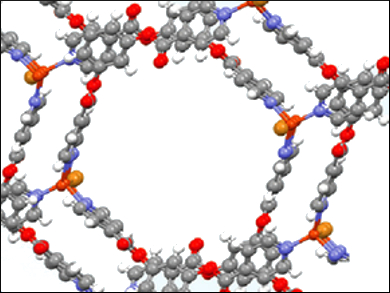The crystalline sponge method for X-ray crystallography uses porous single crystals (crystalline sponges) as hosts to soak up and orient target guest compounds from solution. Crystalline sponges could help to analyze the structures of a wide range of compounds. However, only a few types of hosts are known to serve as crystalline sponges. This is due to the fact that there has been no well-established strategy to develop them.
Yasuhide Inokuma, Makoto Fujita, and colleagues, University of Tokyo, Japan, have discovered a method to find crystalline sponge candidates from the Cambridge Structural Database (CSD). The research group adopted several empirical searching conditions (e.g., pore size, shape, void volume) to find promising host candidates from the over 850,000 entries in the CSD.
A database search aiming to find a new crystalline sponge with pore cross-sections larger than 9×9 Å was conducted, and a candidate coordination network [CuBr(btt)]n (btt = benzene-1,3,5-triyl triisonicotinate) was found. The structure of 1-acetonaphthone was successfully analyzed using the new sponge.
- Finding a New Crystalline Sponge from a Crystallographic Database,
Yasuhide Inokuma, Kazuki Matsumura, Shota Yoshioka, Makoto Fujita,
Chem. Asian J. 2016.
DOI: 10.1002/asia.201601551




